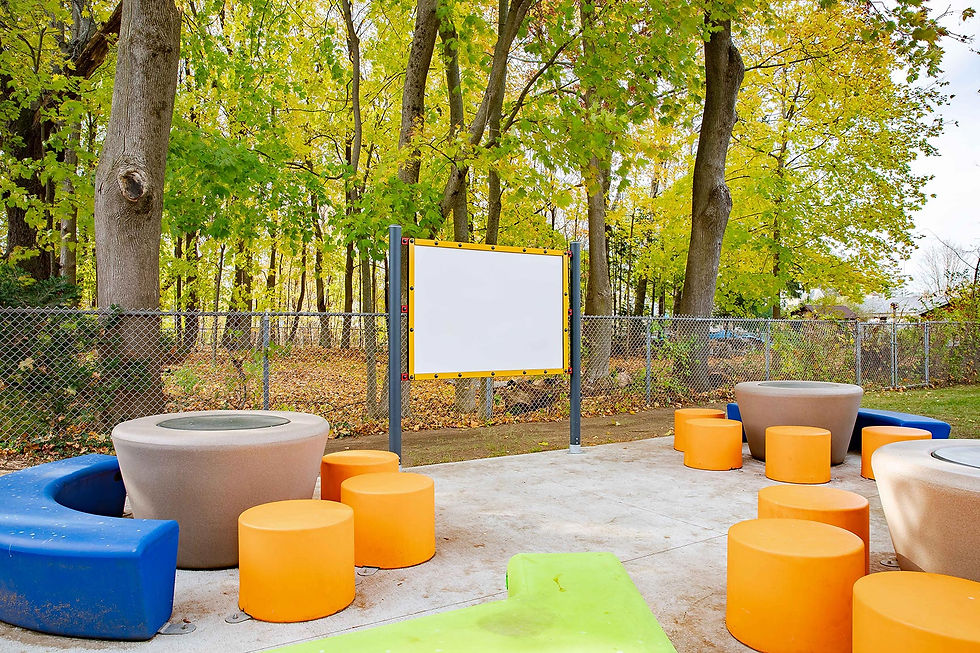Bespoke Playspace Design for Schools: Creating Inspiring Environments for Learning and Play
- kristinannieblog
- Sep 24
- 4 min read

Schools are more than just classrooms and corridors. They are spaces where children grow, develop, and learn valuable life skills. While academics form the foundation of education, play plays an equally crucial role in shaping well-rounded students. For this reason, many schools today are investing in bespoke playspace design for schools —customized playgrounds and outdoor learning environments that are tailored to the unique needs of their students and communities.
In this blog, we’ll explore what bespoke playspace design means, why it’s essential for schools, and the many benefits it brings to children’s development and school environments.
What Is Bespoke Playspace Design?
Bespoke playspace design is the process of creating custom-made outdoor play and learning environments for schools. Unlike standard playgrounds that use generic layouts and equipment, bespoke designs are tailored to the school’s vision, available space, age groups, and educational goals.
These playspaces are not limited to swings and slides—they often include climbing frames, outdoor classrooms, sensory play areas, natural landscapes, and creative features that reflect the school’s character. A bespoke approach ensures the playspace is unique, purposeful, and beneficial for every child.
Why Schools Need Bespoke Playspaces
Supporting Child Development
Children develop physically, socially, and emotionally through play. Bespoke playspaces encourage physical activity with climbing, balancing, and running areas while also offering opportunities for teamwork, role-play, and problem-solving.
Enhancing Learning Beyond the Classroom
Outdoor learning is increasingly recognized as an effective way to support academic subjects. A well-designed playspace can include outdoor classrooms, sensory gardens, or interactive equipment that tie into STEM, literacy, and environmental education.
Reflecting School Identity and Values
Every school has a unique culture and ethos. A bespoke playspace can reflect these values, whether through nature-inspired designs, sustainability-focused materials, or themes that connect with the school’s curriculum.
Maximizing Available Space
Urban schools often face space constraints. Bespoke design ensures every corner of the school grounds is used effectively, whether through rooftop play areas, multi-purpose sports zones, or compact sensory corners.
Inclusivity and Accessibility
Custom design allows schools to create inclusive environments where all children, including those with disabilities, can play and learn together. Wheelchair-accessible equipment, sensory features, and safe surfacing make playspaces welcoming for everyone.
Key Features of Bespoke Playspace Design for Schools

Outdoor Classrooms
Dedicated outdoor learning areas extend education beyond four walls. They can include seating circles, chalkboards, or shaded pavilions where lessons are conducted in a natural, engaging environment.
Active Play Structures
Climbing towers, rope courses, monkey bars, and obstacle trails encourage physical fitness, coordination, and resilience. These activities also teach children risk assessment and problem-solving.
Sensory Play Areas
Sensory features like water play, sand pits, musical instruments, and tactile surfaces stimulate curiosity and support children with sensory needs.
Nature-Inspired Zones
Incorporating trees, shrubs, gardens, and natural materials fosters a connection with the environment. These spaces encourage exploration, mindfulness, and eco-awareness.
Sports and Fitness Facilities
Multi-use games areas (MUGAs), running tracks, or outdoor gym equipment promote physical education and active lifestyles.
Quiet and Reflection Spaces
Calm corners with benches, shade, and greenery allow children to relax, read, or recharge—supporting mental health and emotional well-being.
The Design Process for Schools
Designing a bespoke playspace typically involves several stages:
Consultation and Needs Assessment – Understanding the school’s vision, curriculum goals, student demographics, and budget.
Site Survey and Analysis – Evaluating available space, terrain, safety, and environmental factors.
Conceptual Design – Creating tailored 2D/3D designs and mood boards that reflect the school’s identity.
Equipment Selection – Choosing suitable materials and features, ensuring age-appropriate and inclusive play.
Installation and Construction – Building the playspace with professional project management.
Final Inspection and Handover – Ensuring safety standards are met and the playspace is ready for students to enjoy.
Benefits of Bespoke Playspace Design in Schools
Boosts Student Engagement: Children are more likely to use and enjoy play areas that are exciting and tailored to their needs.
Encourages Outdoor Learning: Bespoke features like nature trails and science corners make outdoor education engaging.
Improves Health and Fitness: Active play reduces sedentary behavior and supports overall well-being.
Fosters Social Interaction: Group activities encourage collaboration, empathy, and communication skills.
Promotes Creativity and Imagination: Themed designs and interactive zones spark role-play and imaginative games.
Adds Value to the School: A unique, high-quality playspace enhances the school’s reputation and appeal to parents.
Trends in Bespoke Playspace Design for Schools
Modern playspace design continues to evolve to meet new educational and social priorities. Some current trends include:
Sustainable Materials: Using recycled plastics, responsibly sourced timber, and eco-friendly surfacing.
STEM Play Areas: Integrating equipment that encourages problem-solving, building, and experimentation.
Themed Designs: Playspaces that resemble castles, space stations, or eco-villages inspire imagination.
Wellness Zones: Incorporating meditation spaces and sensory gardens for mindfulness.
Technology Integration: Smart play equipment with interactive digital features.
Conclusion
Bespoke playspace design for schools goes beyond traditional playgrounds. It creates purposeful, inclusive, and imaginative environments where children can learn, play, and grow together. By tailoring every detail to the school’s values, available space, and student needs, bespoke playspaces provide long-term benefits for physical health, mental well-being, and educational engagement.
For schools, investing in a customized playspace is more than just a facilities upgrade—it’s a commitment to building a vibrant, inspiring, and inclusive learning community for generations to come.





Comments